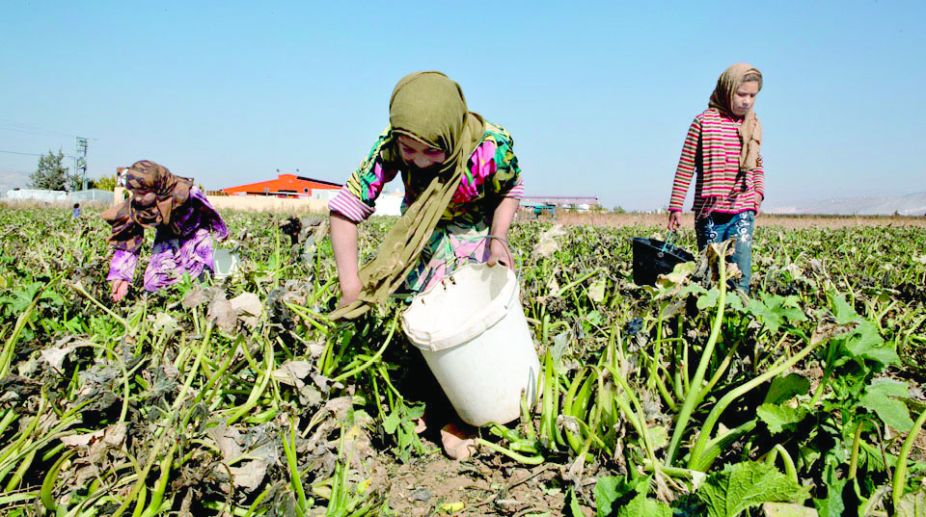Rajasthan Minister alleges phone tapping again
Rajasthan Agriculture Minister Dr Kirodi Lal Meena has once again claimed that his phone is being tapped and demanded an end to the alleged surveillance.

Representational Image.
Observing the World Day Against Child Labour, the UN Food and Agriculture Organisation (FAO) has stated that child labour in agriculture was rising in recent years, driven in part by an increase in conflicts and climate-induced disasters.
Of the 152 million child labourers in the world, the vast majority – 108 million – are engaged in farming, livestock, forestry or aquaculture.
Advertisement
Nearly half of all child labour in the world now takes place in Africa: 72 million, or one in five of Africa’s children, and the vast majority is engaged in agriculture, followed by Asia with 62 million.
Advertisement
Nearly 70 per cent of child labour is unpaid family labour. In 2016, India passed a law that allows children below 14 to engage in “home-based work” with their families, after school hours, or help their families in fields or forest gathering. It amended a 1986 law that prohibits child labour.
Child labour is defined as work that is inappropriate for a child’s age, affects children’s education, or is likely to harm their health, safety or morals.
However, not all work carried out by children is considered child labour. Some activities may help children acquire important livelihood skills and contribute to their survival and food security, FAO says.
The UN body however said child labour in agriculture is a global issue that is harming children, damaging the agricultural sector and perpetuating rural poverty. Long hours of work limit their opportunity to attend school and develop skills. This interferes with their ability to access decent and productive employment opportunities later in life, including opportunities in a modernized agricultural sector.
The child workers in agriculture are exposed to multiple hazards and risks including pesticides, poor field sanitation, high temperatures, and fatigue from doing physically demanding work for long periods.
Efforts to eliminate child labour in agriculture face challenges due to rural poverty and the concentration of child labour in the informal economy and unpaid family labour, according to the FAO study. After amending the existing Child Labour Act, India has framed the Child Labour (Prohibition & Regulation) Amendment Rules, 2017 on 2nd June, 2017.
Parliament was informed on 5 March this year about the number of prosecutions launched under the 1986 Act. The number of the prosecutions has fallen nationwide after amendment of the law.
The number of prosecutions launched under the Child & Adolescent Labour (Prohibition & Regulation) Act, 1986 was 2471 in 2015, 1567 in 2016 and 428 in 2017.
As per the State-wide data given, the number of prosecutions in Assam were 44 in 2015 and 15 in 2016. In Bihar, the figures for the two years were 722 and 107; in Chhastisgarh 62 and eight; and in Uttar Pradesh 206 and 409.
In Haryana, the prosecution figures for 2015, 2016 and 2017 were 44, 14 and four. The figures for the three years, respectively, were, in Jharkhand 16, 234 and 86; in Karnataka 65, 70 and 99; in farm-dominated Punjab 333, 307 and 81; in Odisha 250, 131 and 64; in Gujarat 100, 76 and 34, and in Madhya Pradesh 182, 64, 48.
Advertisement